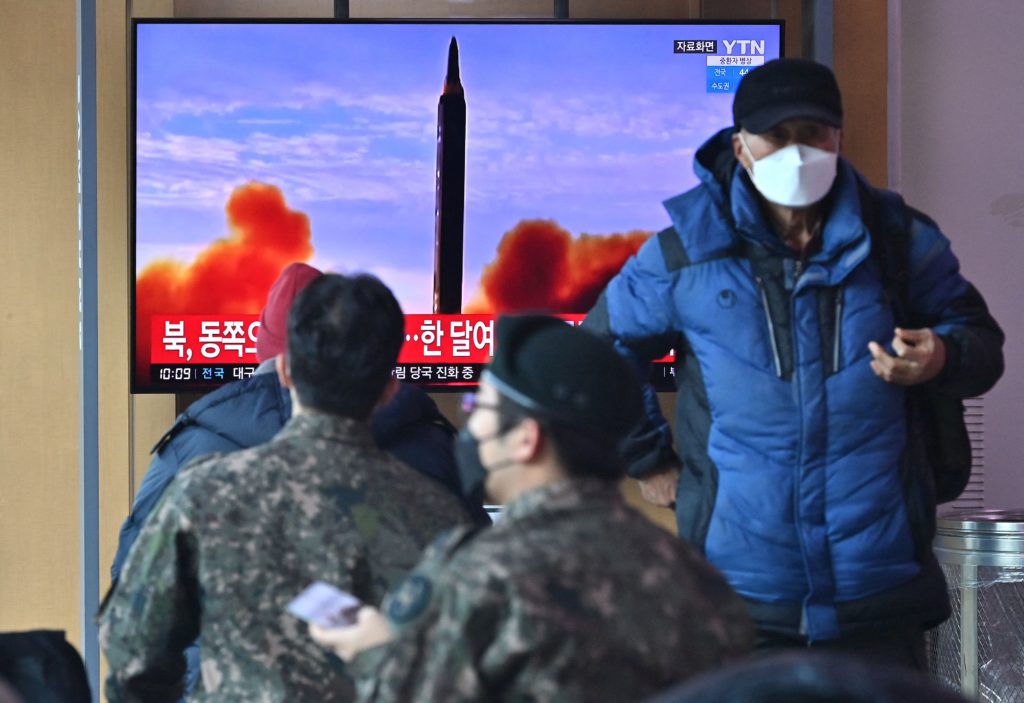(Bloomberg) — North Korea launched what appeared to be its first intercontinental ballistic missile in more than four years, as Kim Jong Un seeks to bolster his ability to strike across the Pacific and deter any U.S. attack.
The missile reached an altitude of more than 6,000 kilometers (3,700 miles) and traveled a distance of some 1,100km, Vice Japanese Defense Minister Makoto Oniki told reporters Thursday in Tokyo. That’s higher and farther than North Korea’s last ICBM test in November 2017.
South Korea’s military separately described the rocket as “long-range” missile. South Korean President Moon Jae-in convened a meeting of his National Security Council.
The projectile landed inside Japan’s exclusive economic zone, about 150km off the coast of Aomori prefecture, Oniki said. The rocket was aloft for about an hour.
“This launch is a serious threat to our country and the fact that it landed inside our EEZ without warning is an extremely dangerous act that puts shipping at risk,” Oniki said.
North Korea typically does not comment on its tests until the next day. The country has described recent tests as efforts to launch a satellite.
Concerns have been mounting that North Korea was looking to end its self-imposed freeze on ICBM tests, after the Yonhap News Agency reported this month South Korea and the U.S. have detected signs of an imminent ICBM launch. North Korea fired off projectiles from a multi-rocket launcher Sunday.
On March 16, North Korea fired a suspected ballistic missile from an area near Pyongyang’s international airport. South Korea’s military believes the test ended in failure with the missile exploding before reaching an altitude of 20 kilometers, Yonhap said.
North Korea often uses its missile launches for political purposes and the latest test comes after neighbor South Korea elected conservative Yoon Suk-yeol to be its new president. Yoon riled North Korea on the campaign trail by saying a preemptive strike would be justified if an attack by the neighbor seems imminent — setting the stage for further friction when he takes office in May.
The latest launch comes after the U.S. announced new penalties against North Korea after determining that a pair of purported satellite launches by Kim’s regime in the past few weeks were used to test systems for a long-anticipated new ICBM.
The U.S. had said earlier that North Korean launches on Feb. 26 and March 4 that were also from the area around the Pyongyang airport were intended to test elements of an ICBM that weapons experts believe could be armed with multiple warheads.
North Korea’s last test of an ICBM was in November 2017, when it fired a Hwasong-15 with a range that experts said could strike all of the U.S. mainland. It was a major breakthrough in Kim’s efforts to deliver a nuclear weapon to any American city.
More stories like this are available on bloomberg.com
©2022 Bloomberg L.P.











